Features of growing broom in the open field and in a container
After planting properly, the broom needs minimal maintenance. For growing, you can choose an unpretentious plant to your taste. Numerous varieties differ in inflorescence color, size and winter hardiness.
Description, types and varieties
Broom is a genus of shrubs and short trees of the legume family. Trifoliate green leaves are oval in shape, there are varieties with spines. In May or June, white, pink, yellow, red, white-yellow or purple inflorescences appear. They adorn the plant for about a month, cool weather encourages longer flowering. Flowers of the original shape, similar to moths, many species have a specific aroma. After flowering, flat beans are tied, which, when ripe, crack and release shiny kidney-shaped seeds.
The extensive family includes about 50 plant species, among which there are deciduous and evergreen representatives with different winter hardiness.
- Russian broom - a beautiful small shrub with slightly curved or erect branches. On the shoots, oval gray-green leaves, there are thorns. Yellow flowers are large, 3-5 pcs. in the axils of the leaves.
- Coronal broom - a beautiful deciduous shrub with thin green shoots up to 3 m high. Leaves of an oblong or oval shape are arranged alternately. Light yellow flowers are arranged one by one or in pairs in the axils of the leaves, their diameter is about 2 cm. After flowering, a bean fruit with several seeds is tied. It is widely cultivated in regions of Europe with a mild climate, withstands frosts down to -20 degrees.
- Early broom - shrub more than a meter high, with a dense crown. The leaves are light green in color, bright yellow flowers with a pungent smell appear in May. The roots are close to the ground. High frost resistance.
- Broom of cus - a dwarf variety popular in Europe with trifoliate leaves and yellowish-white flowers. It reaches 0.3 m in height and 2 m in width. Due to its small size, it is easier to cover with the arrival of frost, therefore, it can be grown in an average climatic zone.
The broom is mainly grown as a houseplant and is often used in winter gardens and greenhouses. The length of the gray-green leaves is about 2 cm, the golden-yellow flowers are collected in a brush. The plant needs abundant watering during flowering and bright lighting.
Another type for indoor floriculture is Canary broom. Due to the rapid growth, the flower needs shaping: pinching in the spring and radical pruning after flowering.
Reproduction
It is not difficult to get new specimens of broom; you can use different breeding methods.
- Seeds.
Often not far from the broom, seeds sprout, which independently fall into the ground. However, getting many plants at once in this way will not work, and seed reproduction will take time. Usually the seed is pre-stratified within two months, and the sowing is carried out in the spring. First, prepare the soil using a mixture of peat and sand in equal proportions. Seeds are planted to a depth of 5-6 mm, at a distance of about 5 cm from each other. The container is transferred to a room with a temperature of about +20 degrees without access to direct sunlight. Watering and spraying of plantings is carried out regularly. Plants dive into separate pots when 2-3 true leaves appear on them.Over time, they are transplanted several times into larger containers. The work is carried out carefully, trying not to damage the earthen lump with roots. Root damage is bad for the health of young plants. For older specimens, sod soil, humus and sand in a ratio of 4: 2: 1 are used as soil. Shoots are pinched in spring to achieve a thicker crown. The plant blooms for the first time at the age of about three years, when it reaches a height of about 50 cm.
- Cuttings.
For such reproduction, semi-lignified shoots with 3-4 leaves are used. Rooting in a mixture of peat and sand is carried out in the summer. The shoots are covered with glass or plastic wrap and grown at a temperature of about 18-20 degrees Celsius. Young plants are regularly ventilated and sprayed. It will take a little over a month for rooting to take place. After the roots appear, the cuttings are planted in pots with a diameter of about 8 cm and grown in a cool room until spring.
- Layers.
You can root branches of an adult broom close to the ground. To do this, they are fixed lower, and then sprinkle the trunk with earth. Moistening is regularly carried out near the layer. The next year, the plant with roots is separated from the mother bush and transplanted.
- Bean inoculation.
This breeding method requires special skills, it is usually used to reproduce varietal species of broom.
All parts of the plant contain toxic substances such as cytisine. For this reason, the broom is not planted next to the bodies of water in which fish live. When working with broom, take precautions: put on gloves, thoroughly wash your hands and tools after carrying out any action.
How to plant broom properly?
When buying a hybrid form of a plant, it is preferable to take grown bushes 3-4 years old with a closed root system. The most favorable time for planting broom is April or May. Drainage from pebbles or broken bricks is placed in the pit. Its height varies from 10 cm on light sandy soils to 20 cm on heavy soil. When planting, the interval between adjacent specimens is on average about 40 cm, depending on the species. The root collar is placed at ground level. The plant is placed in a hole and covered with earth. The soil in the near-trunk circle is compacted and irrigated. After work, the trunk circle is mulched with peat or earth 4 cm high.
Transplanting a plant older than 3 years is not recommended. Adult specimens do not tolerate this procedure well and may die.
Features of cultivation
Subject to simple conditions, you can admire a beautiful plant for many years.
- Choosing a place.
The broom prefers bright areas with shade from direct sunlight in the intense midday heat and protection from cold winds.
- The soil.
The soil is needed light, with high moisture permeability. In heavy soil, it is advisable to add sand and rotted sheet earth. The plant will like the low or neutral acidity of the soil. The main elements of the soil: earth, sand and humus in a ratio of 1: 2: 1.
- Watering.
Broomstick does not tolerate stagnant water and waterlogging poorly, therefore, with regular precipitation, it is not additionally watered.
In the warm season, the shrub will appreciate high humidity, it is advisable to spray it. They do this in the evening or morning, not allowing water to fall on the leaves in hot sunny weather. In the autumn-winter time, spraying and watering in the open field is not performed.
- Current leaving.
Weeds are regularly removed in the area with broom. Loosening is carried out to a depth of no more than 10-12 cm, so as not to damage the root system. A good alternative to such a traumatic procedure would be mulching the trunks with a layer of peat 5 cm thick.
The growth strength of the broom is moderate. Pinching the tips of young shoots in spring will help to form a lush crown and avoid exposure. After flowering, the branches are cut in half. When pruning, old wood is not removed; this procedure weakens the plant.
- Top dressing.
At the beginning of the growing season, urea is added (about 25 g per 10 l of water), during the period of active summer growth, they are fed with complex mineral fertilizer and wood ash (200 g per bush).
- Low temperature protection.
In young specimens (up to three years of age) and hybrid forms of the plant, winter hardiness is low. In severe frosts, the ground part to the root collar can completely freeze out. Shelters of spruce branches or dry leaves in late autumn, before the cold weather, will help prevent plant loss. At the same time, large branches are pressed to the ground with slats or fixed in another way.
Diseases and pests
The plant is affected by the broom moth and broom moth. You can get rid of parasites with the help of organophosphate or bacterial insecticides.
Treatment before the beginning of the growing season with iron or copper sulfate will save from damage by black spot. In the summer they are additionally sprayed with "Fundazol" or Bordeaux liquid. The same measures will help get rid of powdery mildew.
Spider mites and aphids may appear on indoor broom specimens during the spring-summer stay in the garden. With a small number of pests, they are removed mechanically. For this, the leaves are wiped with a cotton pad moistened with soapy water. If there are a lot of parasites, they are sprayed with an insecticide, for example, "Aktara", "Confidor" or "Decis".
Growing in a container
In indoor floriculture, thermophilic varieties and species of broom are grown. Small specimens are placed in appropriately sized flower pots. For large plants, use wooden tubs and large containers.
In summer, it is useful to take indoor brooms outside, protecting them from drafts and gusts of strong wind. They are placed near the eastern or western parts of the room, regularly watered and sprayed. From November to the end of February, a flower needs a pronounced rest period with a gradual decrease in temperature to 8-10 degrees Celsius. Without this condition, the plant is sick. Watering in the autumn-winter period is carried out very rarely, spraying is stopped.
During the period of active growth, indoor brooms are fed with complex mineral fertilizer. After flowering, the shoots are shortened. The transplant is carried out if the roots of the plant have completely filled the flower pot. A layer of expanded clay is placed at the bottom, and a little lime is added to the soil from turf, humus and sand (proportion 4: 2: 1).
In nature, the unpretentious broom grows on poor rocky soils and forest edges. In landscape design, it looks great as a single plant, and in group plantings it is in harmony with representatives of conifers, ground cover perennials, heather and juniper. The plant thrives on various slopes, in rocky gardens and in large containers.
Broom is considered a symbol of spiritual and physical well-being and purification. The flower is able to revive the site with its modest beauty and bright flowers with minimal maintenance.
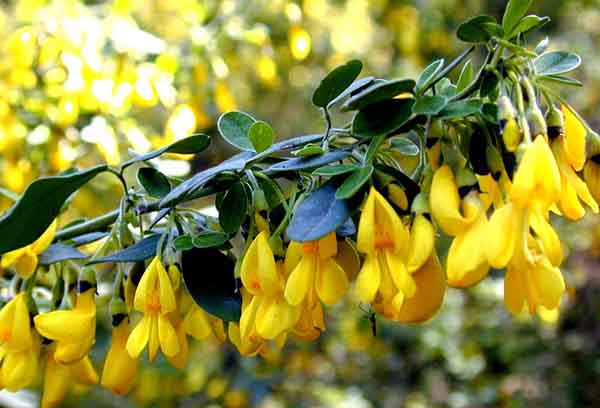


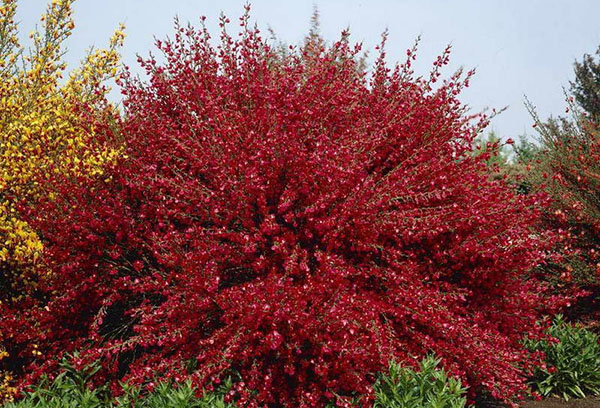
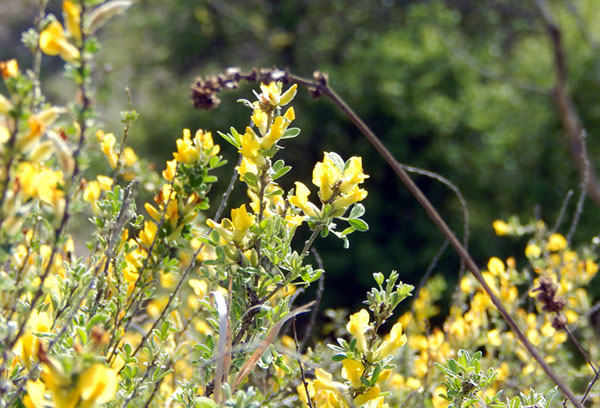



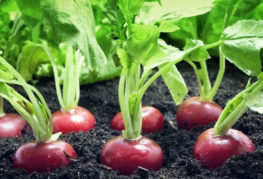

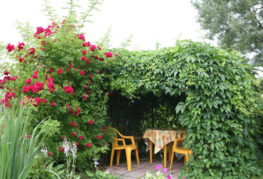
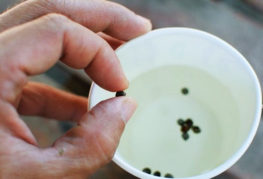
and will be published shortly.